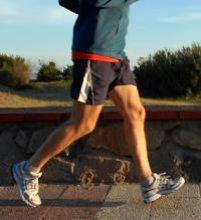Research Projects

Arrhythmogenic right ventricular dysplasia/cardiomyopathy (ARVC/D) is an inherited disorder and one of the most common causes of sudden cardiac death in athletes and the young, apparently healthy adults. Its prevalence is estimated at one in 5,000 people. The disorder causes scarring of the heart muscle, mainly on the right side, which interrupts the normal electrical activity of the heart. The registry used for the study is funded by the National Heart, Lung, and Blood Institute…

Osteoarthritis (OA) is the most common form of arthritis and is a leading cause of pain and disability among the elderly. Racial differences in the outcomes of OA patients exist with African-Americans more likely to experience pain from OA and less likely to be using effective OA treatments than whites. The current project proposes to identify contributors to racial differences in use of various OA therapies and to develop an educational tool to improve understanding and use of these treatments.

In the U.S. Southwest, Coccidioidomycosis (cocci) or Valley fever is an endemic fungal infection. It typically presents as a self-limited pulmonary illness. Patients with autoimmune diseases who are on disease-modifying anti-rheumatic drugs (DMARDs) or biologic response modifiers (BRMs) are at higher risk of more severe infection or infection disseminated outside the thoracic cavity. Currently, there are no management guidelines for cocci in such patients.

The knee is one of the joints most commonly affected by osteoarthritis. Symptoms include pain, stiffness, a grating or grinding sensation when you move the joint and swellings. Treatment depends on how severe the patient’s pain is and ranges from simple painkillers to joint replacement surgery. With more than 600,000 procedures performed each year, the average U.S. cost of a total knee replacement is nearly $50,000. The overall objective of this study is to evaluate the predictive performance of radiographic joint space width, quantitative and semi-quantitative MRI measures and clinical symptoms for subsequent knee replacement.

Osteoarthritis (OA), the most common form of arthritis, is a prevalent and debilitating disease without therapies that alter disease progress and is currently managed with symptom-modifying therapies that are only modestly effective. In spite of substantial progress in understanding the pathogenesis of OA, no effective disease modifying interventions have been established. Degenerative joint cartilage is a central feature of OA, yet joint cartilage has a limited capacity for repair. Results from animal research demonstrate that pulsed low intensity ultrasound (PLIUS) mechanically stimulates, and may promote, cartilage repair. This exploratory trial will investigate whether PLIUS is potentially effective as a disease and symptom modifying intervention in patients with early knee OA.

A major barrier to development of disease-modifying therapy for knee osteoarthritis (OA) is the nature of disease progression, a downward spiral involving many tissues. The potential for changing disease course may be highest before this process is in motion. The literature documents cartilage, bone, and meniscal lesions by MRI in knees of some older individuals without radiographic OA, but doesn’t reveal whether they represent early OA. This study seeks to identify an earlier disease onset window; enable future identification of risk factors for clinically important early lesions and prevention strategies that could be introduced earlier in the lifespan; and identify which lesions represent early disease and potential targets of disease-modifying intervention at a point when success may be more realizable.

Osteoarthritis (OA), a type of arthritis exemplified by deterioration of protective cartilage at the ends of bones, is the most common form of arthritis in the knee. Joint pain may worsen as cartilage gradually erodes over time. Most often, this degenerative “wear-and-tear” disease affects people age 50 or older, but it can occur at younger ages. It’s estimated to afflict 27 million people in the United States alone. Medicine, physical therapy and surgery can help alieve pain and maintain joint movement. The goal of the line of research in this project—which builds on prior work of the investigators and two other ongoing studies—is to identify key risk factors for development of radiographic knee osteoarthrtitis (ROA) and OA structural disease progression, and to identify potential targets for preventative and/or therapeutic interventions.

